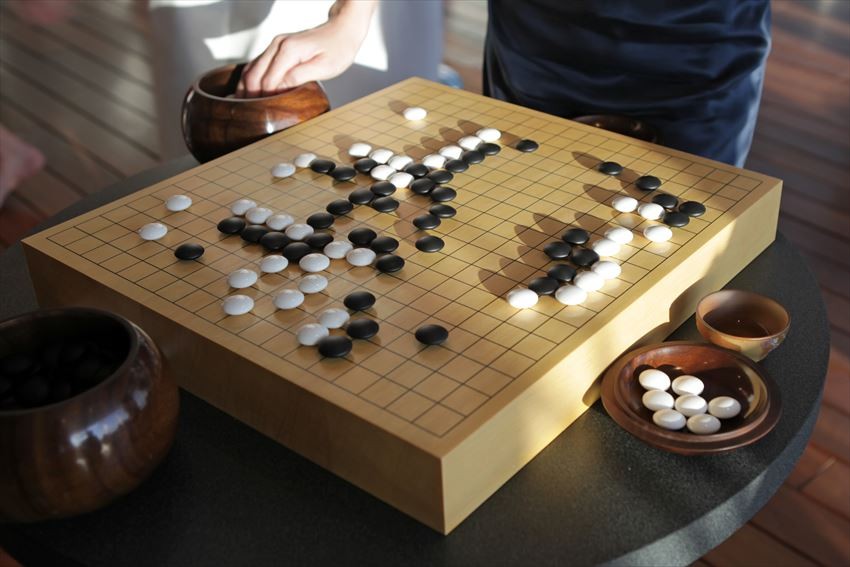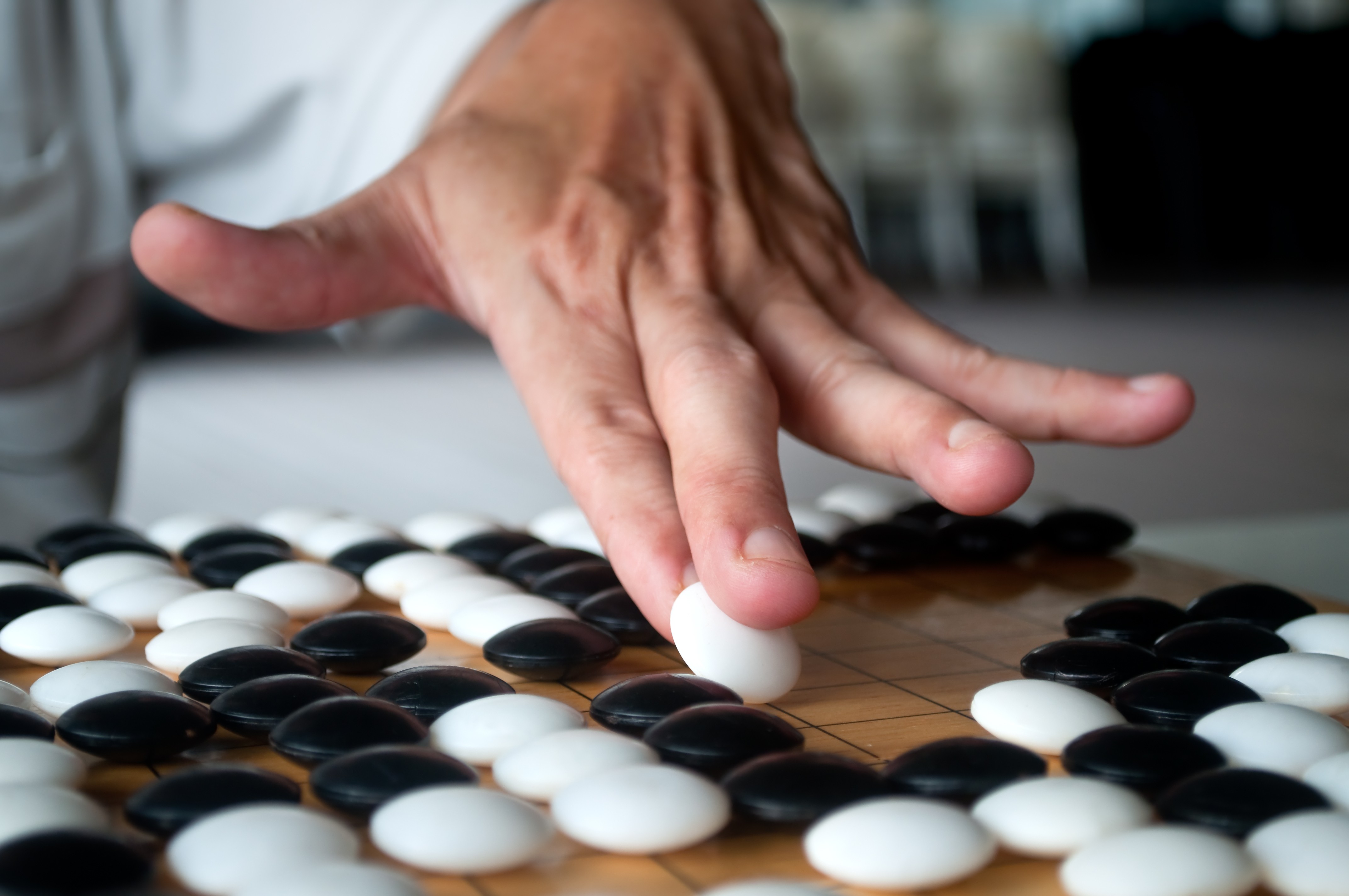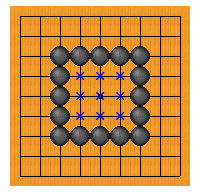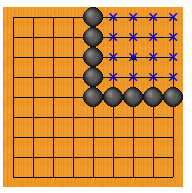If you have Igo board and Igo stone, you can enjoy playing Igo at any time and anywhere. It is a game where a player, who have the trắng stones, compete with another player, who have the black stones at a fixed dimension board. It is often thought that the rules of Igo are difficult but actually, it is very easy once you understand it. Today we will introduce the roots & rules of “Igo”, as well as the tips on how lớn enjoy it!
The history of Igo

There are various stories regarding the origins of Igo, but basically, it is said that it was born in china before 2000 BC. It is also said that Igo was invented by china emperor of “Gyotei” & “Shuntei” with the purpose of using “Igo” to lớn train their children"s discipline. After that, it was transmitted khổng lồ the continental Korean peninsula which is connected to the land of China, and it is said that it was transmitted to japan at around year 607. Igo was played by noble people during Asuka, Nara và Heian era. When it came khổng lồ Kamakura và Muromachi era, Igo was spread to lớn samurai & businessman, and Igo has its golden era when it came to the end of the Edo period. It is said that Igo world has been developed with the tư vấn from the Shogunate & Daimyo.
Bạn đang xem: Game cờ vây nhật bản
After that, in 1924 (Taisho 13th year), "Nihon Ki’in" was established in Chiyoda, Tokyo at the purpose of training professional players, và determining the cấp độ of professional players, holding Igo competitions và so on.
In Japan, when talking about "Igo", there is an image that men from 50 và 60 years of age who are playing the game rather than young people. However, since there is a comic "Hikaru no Go" with the theme of Igo, which has made Igo slowly becomes popular among the youngsters.
What is Igo?

Igo is a board trò chơi which competed by a player of trắng Igo stones & another player of black Igo stones. Two facing each other players will try khổng lồ spread their own territory to each other, one will using trắng Igo stones while another one using đen Igo stones, "The one with the widest spread territory will be the winner.”.
The official Igo board is 19 lines long and 19 lines width horizontally drawn, & the intersecting points (me) are 19 × 19 = 361. There is a smaller Igo board of 13 x 13 vertical và horizontal sides which is more suitable for beginners. One mix of Igo stones is "181 black stones and 180 white stones, 361 in total".
For high-class Igo stones, white stone is made of shellfish while the black stone is made of stone. On the other hand, for an affordable Igo stone, the stone is normally made of glass or plastic.

go stone container which made from the wood of the chestnut tree (left) & Igo stone container which made from the wood of Japanese zelkova tree (right)Image provided by) Nihon ki’in (English) https://www.nihonkiin.or.jp/english/
Also, an Igo container which called as goke is a necessary tool to lớn store the Igo stone, and the vị trí cao nhất lid is used to store the stone taken from the opponent.
The basic of Igo which you need lớn know

1) Both players place each stone alternately to the place where the longitudinal line and lateral line crossing.
As long as no stone is placed at the spot, you can place the stone anywhere you like. However, please take cảnh báo that the stone is not placed in the column lượt thích Othello. Also, you cannot change the màu sắc of stone by turning over like Othello. For Igo, the action of placing a stone is called as “Utsu”.
2) The winner who managed khổng lồ surround the opponent will be the winner
Since the player who succeeds to lớn surround the opponent will be the winner, it is important khổng lồ surround your opponent’s stone efficiently.

Example) Completed surrounding 9 spots territory by using a total of 16 black stonesImage provided by) Nihon Ki’in (English) https://www.nihonkiin.or.jp/english/

Example) Completed surrounding 16 spots territory by using a total of 9 black stonesImage provided by:) Nihonkokuin (English) https://www.nihonkiin.or.jp/english/
3) In order to lớn "take the opponent"s stone", you have lớn surround the stone with your own màu sắc stone

When you succeed khổng lồ surround your opponent"s stone, you can take it.Image provided by) Nihon Ki’in(English) https://www.nihonkiin.or.jp/english/
By surrounding the opponent"s stone you can take the stone as your own. The stone taken is called as "Agehama" & it becomes your own stone. Put it in the lid of an Igo container, and finally use it to lớn reduce your opponent’s territory. Once the stone is placed, it cannot be moved or removed unless it is surrounded by your opponent’s stone and been taken away.
Xem thêm: Dễ Dàng Sửa Lỗi Máy Tính Không Lên Màn Hình Đơn Giản Tại Nhà
4) The player who surrounded with more territory will be the winner!
Igo is a battle to get more territory. The player that surrounded as much as possible on the Igo board is the victory.
Above is only a part about Igo. For those who wish to know more about Igo, please kiểm tra the official trang web of Nihon Ki’in (English), etc.https://www.nihonkiin.or.jp/english/
vì chưng you have plans to lớn go to japan in the near future? I have plans khổng lồ go to nhật bản within a month I have plans to lớn go to japan within 3 months I have plans khổng lồ go to nhật bản within 6 months I have plans khổng lồ go to japan but more than 6 months ahead No, I don't have any plan to lớn go to japan
Please select all the areas you want lớn go on the next trip to Japan. (Multiple choices) Hokkaido (Sapporo, Otaru, Hakodate, Niseko, Furano, Asahikawa, Noboribetsu, Lake Toya, Biei, Abashiri, etc) Tohoku region (Sendai, Matsushima, Towada, Naruko, Kakunodate, Zao, Ginzan, Tazawa, Yonezawa, Hirosaki, Aizuwakamatsu, etc) Kanto region (Tokyo, Asakusa, Ginza, Shinjuku, Ikebukuro, Shibuya, Yokohama, Kawasaki, Kamakura, Nikko, Makuhari, Kawagoe, etc.) Chubu region (Mt. Fuji, Nagoya, Hanamaki, Shirakawa-go, Kanazawa, etc.) Kinki region (Osaka, Kyoto, Nara, Kobe, Koyasan, etc) Chugoku region (Kurashiki, Hiroshima, Izumo, Tottori, Yamaguchi) Shikoku region (Dogo Onsen, Kagawa, etc.) Kyushu region (Fukuoka, Nagasaki, Beppu Onsen) Okinawa
How many times have you traveled khổng lồ Japan? 15 times or more 10-14 times 6-9 times 3-5 times 1-2 times I have never been to japan
Recommend
Book Your Trip
Booking.comAgoda
TokyoFukuokaHakoneHiroshimaHokkaidoIse ShimaKamakuraKanazawaKansai AirportKyotoMount FujiNagasakiNagoyaNarita AirportNikkoNiigataOkinawaOsakaSapporoSendaiTakayamaAomoriIwateMiyagiAkitaYamagataFukushimaIbarakiTochigiGummaSaitamaChibaKanagawaToyamaIshikawaFukuiYamanashiNaganoGifuShizuokaAichiMieShigaHyogoNaraWakayamaTottoriShimaneOkayamaYamaguchiTokushimaKagawaEhimeKochiSagaKumamotoOitaMiyazakiKagoshima 1 night 2 nights 3 nights 4 nights 5 nights 6 nights 7 nights 8 nights 9 nights 10 nights 11 nights 12 nights 13 nights 14 nights